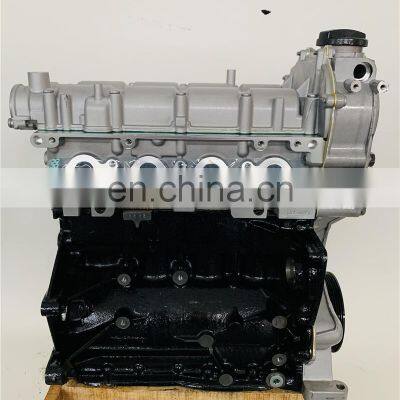Just How a Clp Engine Can Improve Efficiency in Numerous Industries
The introduction of CLP engines notes a substantial change in functional effectiveness throughout different industries, driven by their capability to maximize fuel usage and lessen downtime. As organizations progressively prioritize sustainability along with efficiency, the role of CLP engines ends up being even more vital.
Summary of CLP Engines
CLP engines, or Continual Liquid Propellant engines, stand for a considerable advancement in propulsion modern technology, particularly for room applications. These engines utilize a constant feed system that enables the continual expulsion of propellant, leading to improved effectiveness and performance contrasted to typical solid or hybrid propulsion systems. By preserving a constant flow of fluid propellant, CLP engines can accomplish more exact thrust control, which is crucial for steering spacecraft in various objective situations.
The layout of CLP engines integrates advanced products and ingenious gas monitoring systems. clp engine. This results in decreased weight and increased integrity, vital aspects for long-duration room goals. Moreover, the continuous procedure minimizes the threat of burning instability, an usual obstacle in standard rocket engines.

Benefits in Manufacturing
The manufacturing of Continuous Fluid Propellant (CLP) engines provides a number of noteworthy benefits that enhance both performance and cost-effectiveness. One of the primary advantages is the structured production procedure, which minimizes the intricacy related to typical propulsion systems. By making use of fluid propellant, manufacturers can attain better precision in engine performance, leading to maximized energy output and reduced waste.
Additionally, CLP engines facilitate a greater level of modularity, enabling for less complicated integration right into different production lines. This versatility can significantly reduce preparations and improve general operational versatility. Using CLP modern technology additionally tends to decrease the demand for considerable maintenance because of fewer relocating parts, which translates right into reduced downtime and operational expenses.

Applications in Logistics
Leveraging Continuous Liquid Propellant (CLP) engines in logistics provides considerable advantages in functional performance and dependability. These engines offer a durable service for various transport demands, making it possible for the smooth activity of this goods across huge ranges. The fundamental style of CLP engines permits regular power outcome, which converts into Full Article smoother and more predictable transportation timetables.
Among the crucial applications of CLP engines in logistics is in heavy-duty freight transport, where they can drive both ground and airborne vehicles. Their capability to maintain high performance under differing lots problems guarantees that distribution timelines are fulfilled, therefore boosting client contentment. Additionally, CLP engines can be integrated right into automated logistics systems, helping with real-time tracking and enhancing route planning.
In addition, the toughness of CLP engines decreases maintenance downtime, allowing logistics business to optimize their operational abilities. This is particularly valuable in warehousing operations, where performance in taking care of and moving items is critical. As logistics continues to evolve, the combination of CLP engines stands for a forward-thinking technique that not just improves performance but likewise supports the market's growing needs for reliability and rate.
Effect On Energy Performance
How do Continuous Liquid Propellant (CLP) engines improve power effectiveness in transport? CLP engines utilize a constant circulation of liquid fuel, maximizing burning processes and keeping a secure drive output. This style decreases energy losses connected with typical burning browse around these guys engines, where fuel distribution can vary and bring about ineffectiveness.
The constant procedure of CLP engines enables a more effective thermal cycle, resulting in higher certain impulse contrasted to standard engines. clp engine. This equates to reduced gas consumption for the very same amount of job done, substantially lowering functional expenses across different transportation industries, consisting of air travel and maritime markets
Moreover, the ability of CLP engines to maintain optimum efficiency under differing tons conditions lowers the demand for frequent velocity and deceleration, additionally enhancing gas effectiveness. Improved power efficiency not only adds to set you back financial savings yet additionally causes decrease greenhouse gas discharges, lining up with worldwide sustainability objectives.
Future Trends and Innovations
Arising improvements in Constant Liquid Propellant (CLP) engine technology assurance to revolutionize the landscape of transport efficiency and sustainability. As industries pivot toward greener alternatives, CLP engines stand at the leading edge, incorporating cutting-edge materials and style approaches that improve performance while minimizing environmental impact.
Among the most appealing patterns is the fostering of crossbreed systems that integrate CLP engines with renewable resource sources. This synergy can optimize gas usage and lower discharges, straightening with worldwide sustainability goals. Furthermore, improvements in computational fluid dynamics (CFD) are facilitating the style of even more aerodynamically efficient engines, bring about minimized drag and enhanced gas performance.
Moreover, the development of clever tracking systems is established to enhance functional effectiveness. These systems utilize data analytics and IoT technology to maximize engine efficiency in real-time, guaranteeing that the engines operate within their most effective parameters.
As research study proceeds to explore alternate propellant solutions-- such as biofuels and synthetic gas-- the future of CLP engines looks appealing. By harnessing these advancements, sectors can not only enhance their performance yet additionally contribute substantially to a cleaner, more sustainable future in transportation.
Verdict
In final thought, CLP engines stand for a considerable innovation in performance throughout several sectors. Their ability to optimize fuel intake and minimize operational costs, combined with a constant feed system, enhances power output and operational dependability. The integration of advanced materials and fewer moving components minimizes maintenance demands, while positioning with sustainability goals positions CLP engines as a critical technology for the future. Continued technology in this field assures more improvements in efficiency and ecological performance.